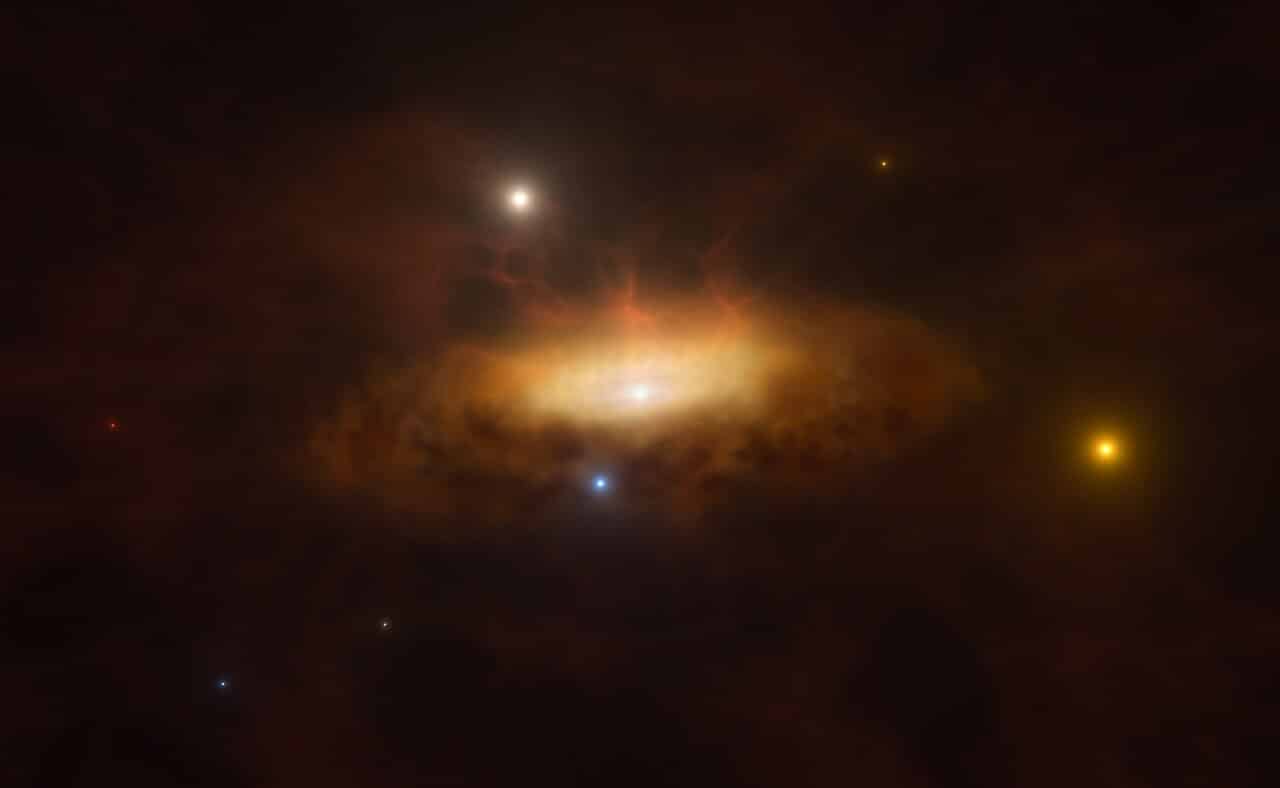In 2019, the faint distant galaxy SDSS1335+0728 suddenly and rapidly increased in brightness. Flashes of brightness appear at the center of galaxies when an unfortunate star flies too close to a black hole. Usually these events last tens of days. Here the galaxy remains bright even after several years. It appears that astronomers have captured the emergence of an active galactic nucleus for the first time.
Supermassive black holes at the centers of various galaxies accumulate most of their mass due to active absorption of matter. This period of rapid growth of each hole is believed to last tens of thousands to tens of millions of years. The activity of the object is inherently unstable – the core of the galaxy appears to be “opening” and “closing”. Judging by the sizes of supermassive black holes, most galaxies we know of have already passed this stage. But there may still be more intermediate-mass black holes.
Medium-sized black holes are considered to be between tens and hundreds of thousands of solar masses in size, while small supermassive black holes are considered to be between hundreds of thousands and millions of solar masses. They grow from embryos whose masses range from hundreds to tens of thousands of solar masses, according to calculations. If we believe that small black holes will become as massive as supermassive black holes in the future, they will inevitably enter a period of activity at some point.
Scientists are looking for galaxies with medium-sized holes, hoping to catch the moment when growth begins. In February 2024, astronomers reported the discovery of a young, active galactic nucleus in a previously dormant galaxy. The research was published in the journal Astronomy and Astrophysics. Unfortunately, several years had passed by the time the object was discovered during the “awakening”. Now scientists are lucky.
In late 2019, the inconspicuous galaxy SDSS1335+0728 suddenly began shining much brighter than before. To understand why, astronomers conducted additional observations. The object reached its peak brightness until March 2020. Since then the brightness has been falling for more than 1,550 days. The object now shines brightly in ultraviolet, visible and infrared wavelengths. In February 2024, the galaxy began emitting X-rays.
There are several possible causes of the galactic center flare: a tidal collapse event, a change in the state of the active galactic nucleus, unusual behavior of the active nucleus, and others. Even the appearance of a supernova in the central region of a galaxy can look like a galactic center flare.
After comparing the new data with archival observations from space- and ground-based telescopes, the researchers concluded that they still managed to capture the precious “activation” moment of the black hole at the center of the galaxy. They can rule out the hypothesis that this could have been a tidal destruction event. However, if this was really a star flying very close, its destruction turned out to be extremely abnormal. The flash turned out to be too weak and its brightness faded for too long.
Light from galaxy SDSS1335+0728 has reached us for approximately 340 million years (redshift 0.024). It is located in the direction of the constellation Virgo. Its mass is approximately six billion solar masses. The mass of the central black hole is about a few million solar masses, so it is considered a small supermassive black hole.
According to study co-author Claudio Ricci from the University of Diego Portales (Chile), “a similar activation could also occur in Sagittarius A*, the massive black hole at the center of our Galaxy.” However, it is not known how possible such an event is.
The authors of a new study published in the journal Astronomy and Astrophysics , are still confident that they have finally captured the “activation” of the galactic core. But you need to continue observing the object to exclude other hypotheses. The young active core mentioned in February 2024 can provide guidance on what the parameters of SDSS1335+0728 should be in a few years.
Paula Sánchez Saez commented: “Whatever the reasons for the variability, this galaxy is a valuable source of information about the growth and evolution of black holes.”Paula Sánchez Sáez), a European Southern Observatory astronomer and the main author of the new scientific study.













